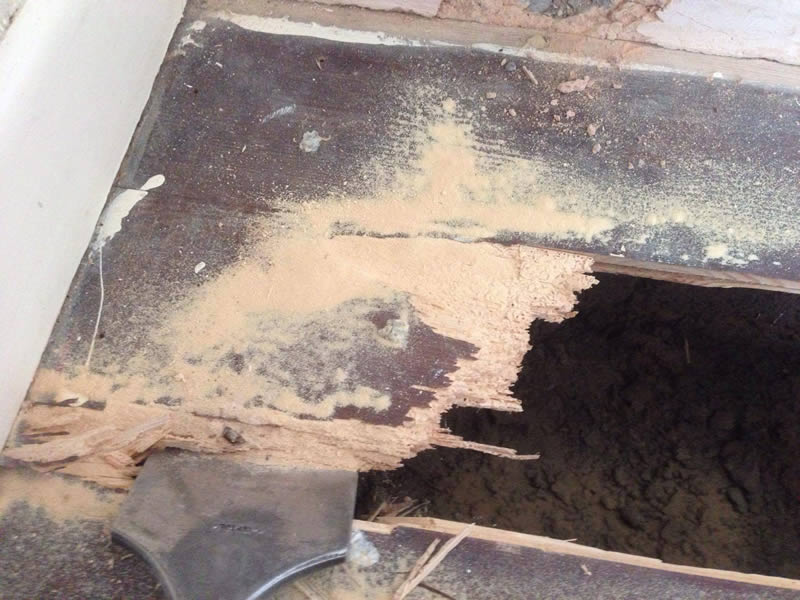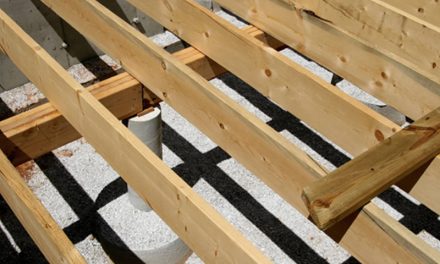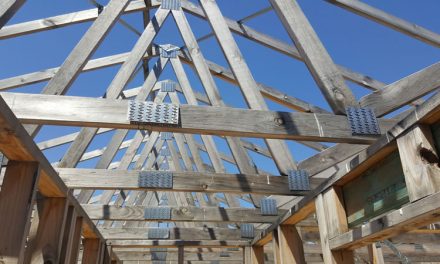Over the years we have received requests for assistance from organizations as far afield as the USA, India, and New Zealand so it wasn’t a total surprise when last month we got a call for assistance from a couple in the UK. Given that the call did not originate from an industry body I was curious to find out how and why they ended up calling us and of course what their problem was. Seems they had a flooring problem, caused or so they believed by Woodworm.
Turns out a friend of theirs reads the Timber Trader News regularly and suggested they contact us. Once again I am overawed by the global reach of our homegrown magazine. But why did they call for assistance from someone on the other side of the planet? Seems they were finding it difficult to get an unbiased opinion on the cause and extent of the damage. As consultants we are often sent photographs with which to identify floor failure issues, however this is the first time we been taken on a guided tour via skype to identify a problem that was eventually attributed to woodworm damage , isn’t technology great.
In this instance the timber floor was a platform that supports carpet and a laminate floating floor. Once the resilient floor covering were removed the home owner’s suspicions were indeed confirmed; the underlying floorboards joists and bearers all showed signs of woodworm infestation. But it is impossible to determine the degree or true extent of the damage, even on Skype.
Giving technical advice over the phone is never a good idea, as an individual’s perception and understanding of an issue can vary greatly depending on their prior knowledge, preconception and their emotional and financial investment in the issue. However on this occasion I felt confident to provide them with some background information on woodworm and redirect them to specialist services in their area regarding treatment of the infestation and rectification of the floor.
On following up this enquiry I learned that further to an onsite inspection a large area of boards was removed revealing considerable damage to the joist and bearers. The original joist went into a hole/cavity at each end of the room which necessitated joining the joist in some way on top of the bearers. As it turned out the adjoining passage and many of the rooms in the dwelling had been compromised and major rectification was required.
New bearers were required for this rectification project, to get some idea of what was involved we referred to Australian Standard AS 1684.2 section 4.2 Building practice 4.2.1 Bearers 4.2.1.1 General which states: Bearers shall span between subfloor supports or walls. Bearers may either be single or continuous span over supports.
Where required, bearers shall be leveled, preferably by checking out the underside over supports. Packing of minor deficiencies is permitted, provided the packing is a corrosion-resistant, incompressible material over the full area of support.
When it comes to laying the joist over the bearers any joints in the joists shall be as shown in figure 4.4 of the standard and shall be made only over bearers or supports. Joists joined over bearers and supports shall have minimum 30mm for each joist. Joints in joists that are required to be in line shall be butted or scarfed, but shall not be lapped.
If you come across woodworm damage on a project you are involved in a good place to get some background information is Keith R Bootle’s book Wood in Australia and his information regarding Destroyers of Wood, and the Building Code of Australia regarding the fitting of joist and platform floors. A word of caution here, the woodworm treatment and flooring rectification work should only be undertaken by appropriately qualified and licensed practitioners.
While the best known destroyer of timber floors in Australia is the white ant we too are blessed or cursed depending on your perspective with our share of woodworm, otherwise known as borer problems. There are four stages in the borer life cycle; Woodworm beetles deposit their eggs in the timber pores of felled trees, wooden furniture and flooring timbers. The term woodworm refers specifically to the larvae that do most of the boring and consumption of timber fibre; then there is the pupa. The exit holes seen on the surface of timber are usually made by the emerging adult beetle. The amount of damage caused by woodworm will depend on the species of beetle, the severity of the infestation and the type of wood.
Some of the more common woodworm beetles here and in the UK are:
- Powder post Beetle (Lyctus brunneus)
- Common Furniture Beetle (Anobium punctatum)
- House Longhorn Beetle (Hylotrupes bajulus)
Lyctus brunneus the Powder Post Beetle is the most common beetle in Australia, the Common Furniture Beetle/ Death Watch Beetle (Anobium punctatum) is an introduced species, most instances of infestation occur in old furniture, pine floor boards and packing cases. While the European House Borer/ House Longhorn Beetle (Hylotrupes bajulus) has not become established in Australia, infected imported timber shipments have been detected from time to time.
In the UK, the most common woodworm borer is the Common Furniture Beetle. The resulting impairment depending on the extent and duration of the infestation can range from superficial surface damage to total erosion of the timber fibre to such an extent that the timber loses its structural integrity.
Unsure if you have a woodworm infestation? That is understandable as it can be very difficult to see the woodworm beetles never mind the woodworm larvae that bore through the timber. However, what you will be able to spot are the typical tell-tale signs that indicate a possible woodworm infestation.
They include:
- Small round holes
- Fine powdery dust
- Crumbly edges to boards and joist
- Tunnels within the timber
- Weak or damaged timber of floor boards
- Beetles emerging from hole(s)
- Dead beetles
It is a common misconception that woodworm only affects older properties. In fact it can cause damage to newly constructed buildings as well. Any wooden structure, furniture or worktop could be infected with eggs or larvae without it being noticeable. You may not discover a woodworm infestation for several years. However, if you do suspect woodworm, you should organize an inspection and if necessary treatment by a qualified service provider. Rectification work of the timber boards, joist and bearers should not take place until all treatments have been confirmed successful.
If you come across weak or damaged flooring or timber, take this as a signal that something is untoward regarding the timber. It might be the case that it’s a dry rot or wet rot issue rather than a woodworm issue. We would suggest however, that you review the tell-tale tips above to see if you have an evidence of woodworm. If in doubt, we would suggest you get someone to come and inspect the timber in question.












